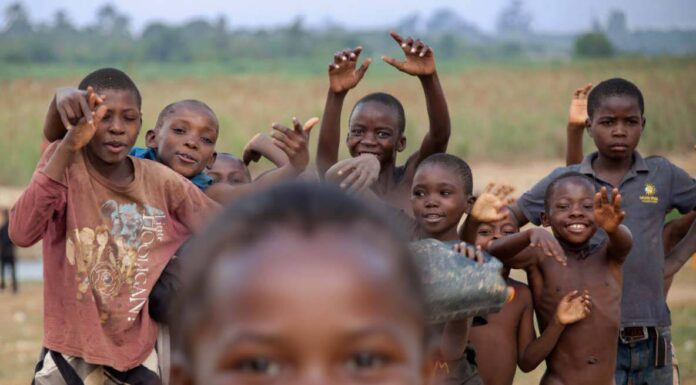In the mineral-rich provinces of the DRC, the pursuit of clean energy has inadvertently perpetuated a cycle of exploitation. Cobalt, vital for lithium-ion batteries, powers the world’s shift away from fossil fuels, but its extraction often relies on artisanal mining where child labor thrives. According to a 2025 Humanium report, an estimated 40,000 children work in these mines, facing severe health risks from toxic exposure and physical dangers [1]. The World Bank notes a staggering 72.9% poverty rate driving families to send children into mines, while armed conflicts in eastern regions like North Kivu and South Kivu compound the issue [5]. This overview draws from recent studies and expert analyses to examine the human and environmental costs, balancing NGO calls for immediate action with governmental efforts for sustainable reform.

The Scale of Child Exploitation
Child labor in DRC cobalt mines remains alarmingly widespread, with 2025 figures painting a dire picture. The International Labour Organization identified over 6,200 children in Haut-Katanga and Lualaba provinces alone in 2024, while broader estimates reach 40,000 nationwide, including some as young as three to seven [1]. A Rights Lab study from the University of Nottingham found 9.2% of artisanal miners are children, with 36.8% in forced labor and 4.4% trafficked [2]. Investigations in Haut-Katanga counted 16,845 children in the cobalt supply chain, often performing tasks like digging deep tunnels or carrying heavy loads without protective gear [4].
Poverty and lack of alternatives fuel this crisis; 87.8% of miners enter the sector due to economic desperation [2]. Armed groups control 20% of eastern DRC territory, forcing children into labor to fund insurgencies [5]. Expert analysis highlights how global cobalt demand, dominated by Chinese firms controlling 80% of production, overshadows these informal operations, perpetuating exploitation [G10].
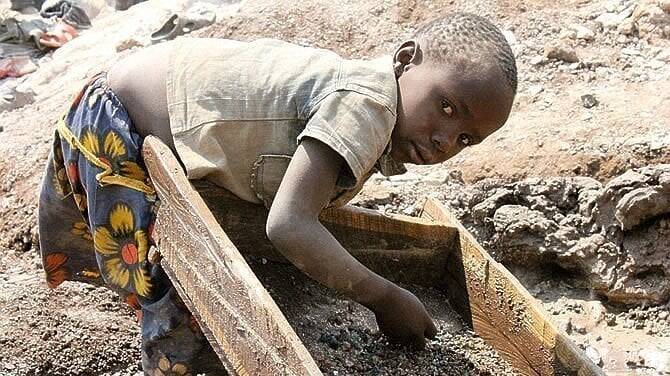
Pollution and Health Risks to Children
Artisanal mining sites are environmental hazards, exposing children to toxic pollution that causes long-term health issues. Miners inhale cobalt dust, leading to respiratory diseases, skin conditions, and risks like cancer, with children particularly vulnerable due to underdeveloped bodies. Reports describe poorly ventilated tunnels up to 100 meters deep, where collapses and chemical exposure are common [1]. In conflict zones, unregulated digging causes soil erosion, water contamination with heavy metals like uranium and lead, and deforestation, affecting entire communities [4].
A 2025 Wiley study links rising battery demand to declining education rates in mining areas, as children face hazardous conditions that disrupt schooling [4]. NGOs like Save the Children emphasize how these risks undermine the green transition, calling for protections amid armed exploitation [6].
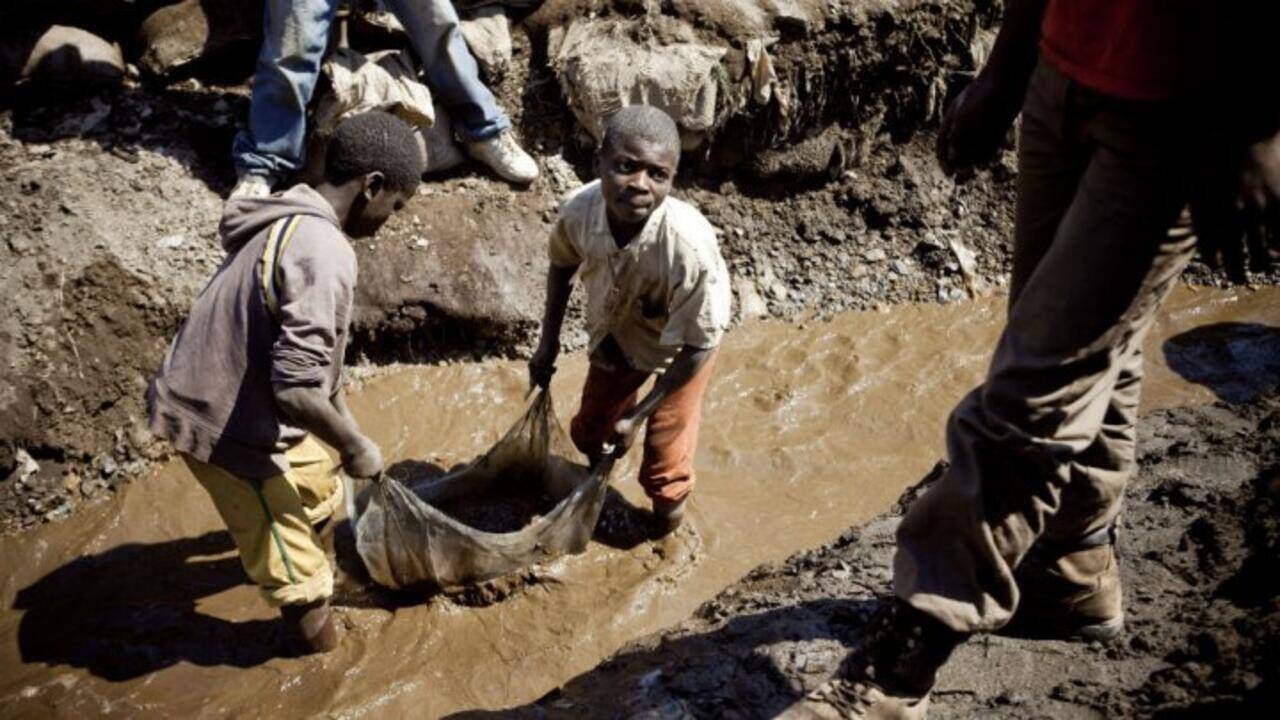
Role of Armed Groups and Conflict
Armed groups like M23, allegedly backed by Rwanda-linked rebels, play a central role in exacerbating child labor and pollution. Controlling illicit supply chains in North Kivu, South Kivu, Ituri, and Maniema, they traffic children from displaced populations into mines, using revenues to sustain violence [G13]. This “environmental trafficking” forces kids into degraded sites, worsening pollution through unregulated practices.
The DRC government’s July 2025 ceasefire with M23 in Doha aims to reduce displacement and exploitation [5]. However, experts note persistent challenges, with illicit trade undermining stability [G13]. Balanced viewpoints emerge: NGOs like Human Rights Watch demand accountability for rebel-linked abuses [G2], while the government favors gradual formalization to avoid economic collapse, acknowledging mining’s revenue importance [G4].
NGO and Government Positions
NGOs advocate fiercely against child labor, with Amnesty International and Humanium urging corporate transparency and traceability to combat forced labor [2][1]. Save the Children highlights pollution’s health toll, pushing for child protection in the energy transition [6]. They criticize tech giants for supply chain oversights, as seen in dismissed 2024 lawsuits against Apple and others [G8].
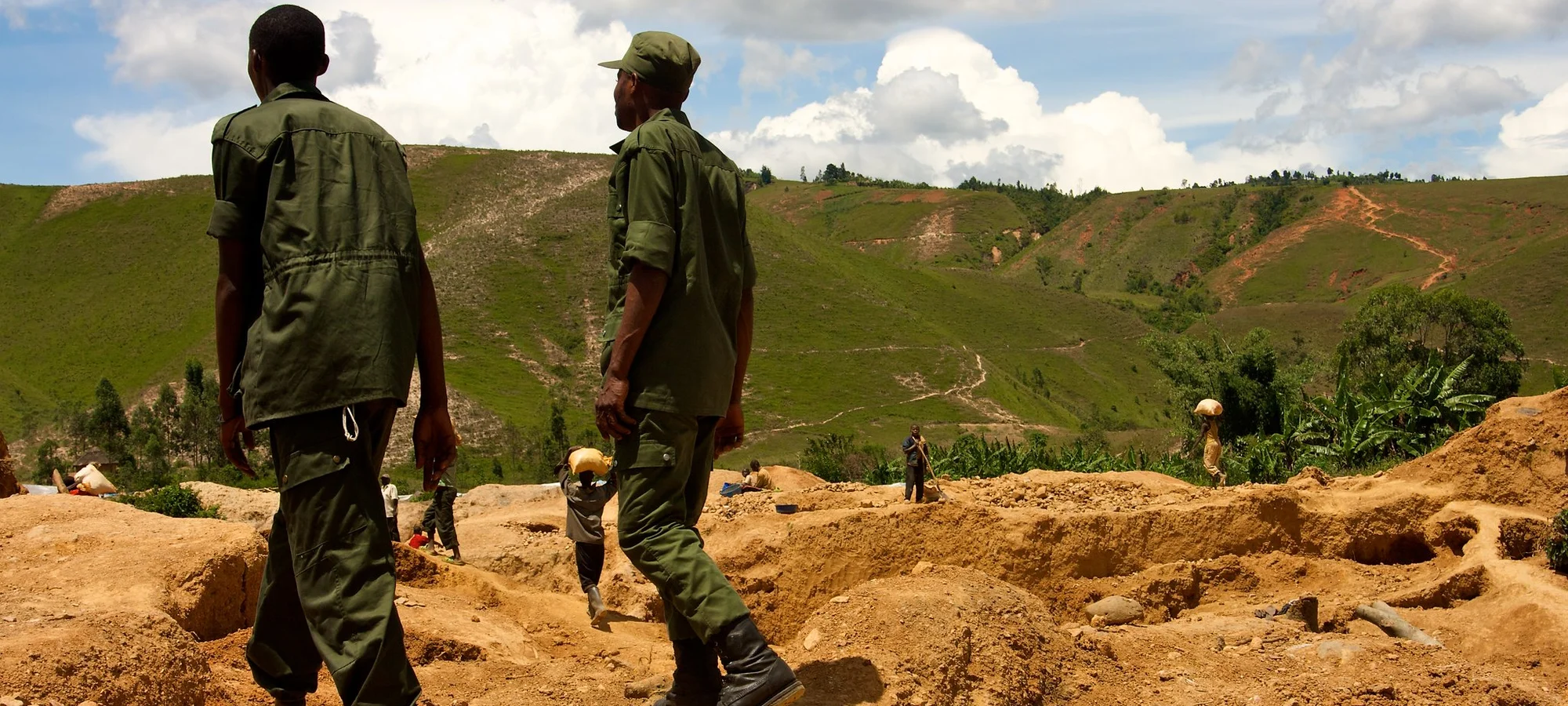
The DRC government recognizes the issue, lifting a cobalt export ban in October 2025 for quotas to regulate supply and curb illicit activities [G9]. Policies include monitoring mechanisms, though corruption and rebel control hinder enforcement. NGOs seek immediate bans, while the government balances economic needs.
Emerging Solutions and Technologies
Constructive efforts are underway, including blockchain-based traceability to certify child-labor-free cobalt, though limited in artisanal zones [2]. Pilot projects test adapted protective equipment to reduce toxic exposure, despite access barriers [1]. Low-impact mining technologies aim to minimize degradation, supported by international aid [4].
The U.S. 2025 Act mandates stricter import enforcement against forced labor, promoting transparency [3]. Community programs focus on education and poverty alleviation to break the cycle [5].
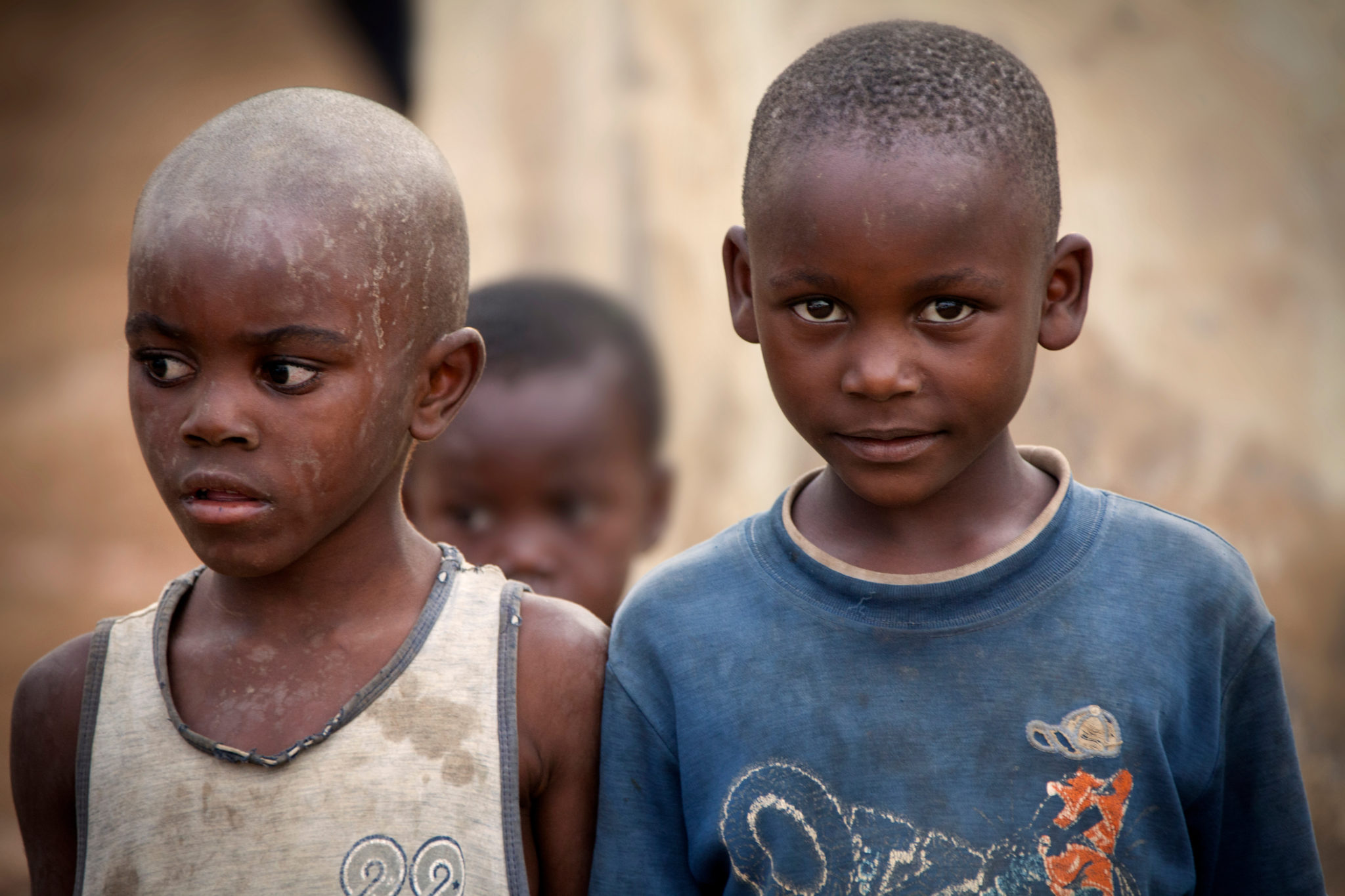
KEY FIGURES
- An estimated 40,000 children are involved in cobalt mining in the DRC, some as young as seven years old, working under hazardous conditions (Humanium, 2025) [1].
- The International Labour Organization (ILO) identified over 6,200 children working in mines in Haut-Katanga and Lualaba provinces alone in 2024 (Humanium, 2025) [1].
- Research by the Rights Lab at the University of Nottingham found that 9.2% of artisanal miners surveyed were children, with 36.8% in forced labor, and 4.4% had been trafficked (Nottingham, 2025) [2].
- Recent investigations counted around 16,845 children involved in the artisanal cobalt supply chain in Haut-Katanga province (Wiley Online Library, 2025) [4].
- Poverty rate in the DRC remains extremely high at 72.9%, driving child labor and exploitation in mining (World Bank, 2025) [5].
- Armed groups like M23 and Rwuda control roughly 20% of eastern DRC territory, exacerbating insecurity and forced labor, including child labor (World Bank, 2025) [5].
RECENT NEWS
- August 2025: Rights Lab at University of Nottingham released a report highlighting the ongoing forced labor and child labor in cobalt mines in Haut-Katanga and Lualaba provinces, urging better corporate and policy interventions [2].
- Early 2025: U.S. Congress passed the Stop China’s Exploitation of Congolese Children and Adult Forced Labor through Cobalt Mining Act, mandating stricter enforcement against imports linked to forced labor in the DRC and increased transparency [3].
- July 2025: The Congolese government and the M23 rebel group signed a ceasefire agreement in Doha, aiming to reduce conflict-driven displacement and exploitation in eastern DRC [5].
STUDIES AND REPORTS
- Humanium (2025) documents children as young as 3–7 years old working in artisanal mines, performing hazardous tasks such as digging deep tunnels, carrying heavy loads, and handling toxic rocks without protection, exposing them to severe health risks and death [1].
- Rights Lab report (2025) revealed that 87.8% of artisanal miners entered mining due to lack of alternatives, with children disproportionately affected by debt bondage, trafficking, and forced labor [2].
- Study published in Wiley Online Library (2025) links the rising demand for lithium-ion batteries to a decline in children’s education rates in mining communities, due to child labor and hazardous environmental conditions [4].
- Save the Children and ILO reports emphasize the interconnectedness of armed conflict, trafficking, and child labor, especially in Ituri, North Kivu, South Kivu, and Maniema regions, where militias exploit children to finance armed groups [1][2][6].
TECHNOLOGICAL DEVELOPMENTS
- Introduction of traceability and blockchain-based supply chain monitoring technologies is underway to certify cobalt sources free from child and forced labor, though implementation remains limited in artisanal mining zones (Rights Lab, 2025) [2].
- Pilot projects are testing improved personal protective equipment (PPE) adapted for artisanal miners and children, aiming to reduce exposure to toxic dust and injury, but uptake is low due to cost and access issues (Humanium, 2025) [1].
- International efforts focus on low-impact mining technologies to reduce environmental degradation and reduce hazardous exposure for miners, including children, but these technologies are not widely available due to infrastructure and funding gaps [4].
MAIN SOURCES
- https://www.humanium.org/en/the-current-state-of-child-labour-in-cobalt-mines-in-the-democratic-republic-of-the-congo/ – Humanium report on child labor in DRC cobalt mines (2025)
- https://www.nottingham.ac.uk/news/blood-batteries – Rights Lab report on forced and child labor in cobalt mines (Aug 2025)
- https://www.congress.gov/118/crpt/hrpt895/CRPT-118hrpt895.pdf – U.S. Congressional report on the Stop China’s Exploitation Act (2025)
- https://onlinelibrary.wiley.com/doi/10.1111/iere.70001?af=R – Academic study on cobalt mining, child labor, and education (2025)
- https://www.worldbank.org/en/country/drc/overview – World Bank overview of DRC socio-economic conditions and conflict impact (Oct 2025)
- https://www.savethechildren.net/stories/drc-cobalt-mines-child-labour-and-green-transition – Save the Children on child labor and green transition in DRC cobalt mining (2024)
—
This synthesis presents the latest verified estimates, studies, and policy developments on child labor in cobalt mining in the DRC, highlighting the ongoing severe exploitation, health and safety hazards, and the complex interplay of armed conflict, trafficking, and poverty driving this crisis. Technological and regulatory efforts are emerging but face significant challenges in implementation amid instability and entrenched poverty.
Propaganda Risk Analysis
Score: 4/10 (Confidence: medium)
Key Findings
Corporate Interests Identified
The article mentions ‘the pursuit of clean energy’ and links to companies in battery production (implying tech giants like Apple, Google, Tesla via context), but does not name specific firms. It appears critical of corporate reliance on exploitative mining without direct praise, potentially benefiting mining firms or green tech companies by pushing for ’emerging solutions and technologies’ that could involve corporate-led reforms. Broader web sources (e.g., NPR, Reuters) indicate lawsuits and reports accusing tech companies of benefiting from child labor without accountability.
Missing Perspectives
The article excerpt lacks voices from affected communities, independent human rights experts (e.g., from Amnesty International or local DRC activists), or critics of the green energy industry who argue for systemic changes like supply chain bans. It mentions a ‘Wiley study’ on education rates but excludes opposing views from mining companies or governments defending practices, and omits broader critiques of Western consumerism driving demand.
Claims Requiring Verification
References to ‘declining education rates’ linked to battery demand cite a ‘Wiley study’ without specifics or links, making it dubious without verification. Broader claims like ‘environmental trafficking’ and ‘pollution and health risks to children’ align with documented reports (e.g., Save the Children, World Bank), but statistics on child laborers (implied 40,000+) match unverified figures circulating on X/Twitter and in media (e.g., TIME, CBS News) that vary and lack precise sourcing in the excerpt.
Social Media Analysis
Searches on X/Twitter reveal a pattern of posts criticizing the green energy boom for relying on child labor in DRC cobalt mines, with users sharing images and stats on exploitation, low wages, and health risks. Posts often tag the issue to electric vehicles and batteries, showing sentiment against ‘greenwashing’ by tech companies. Activity spans years, with higher engagement on posts from awareness-focused accounts, but no overt signs of paid campaigns or astroturfing—more indicative of grassroots outrage or activist amplification. Recent posts (up to 2025) link it to broader themes like modern slavery and ethical supply chains.
Warning Signs
- Language like ‘pushing for child protection in the energy’ and ’emerging solutions and technologies’ sounds promotional for corporate reforms, potentially greenwashing by framing exploitation as solvable via tech without addressing root causes like poverty or regulation.
- Absence of specific sourcing for claims (e.g., no links to the Wiley study or data on pollution/health risks), which could indicate unverified statistics.
- Incomplete balance: The article highlights negatives (exploitation, pollution) but transitions to ‘solutions’ without critiquing corporate accountability, missing environmental concerns like long-term ecosystem damage in DRC.
- Potential marketing tone in phrases like ‘impact mining technologies,’ which could echo industry PR for ‘sustainable’ mining without evidence of efficacy.
Reader Guidance
Other references :
humanium.org – The current state of child labour in cobalt mines in the … – Humanium
nottingham.ac.uk – News – New report highlights extent of forced labour in cobalt mines …
congress.gov – [PDF] R E P O R T – Congress.gov
onlinelibrary.wiley.com – The Dark Side of Batteries: Cobalt Mining and Children’s Education …
worldbank.org – Democratic Republic of Congo Overview – World Bank
savethechildren.net – DRC: Cobalt mines, child labour and the green transition
dol.gov – Child Labor in Congo, Democratic Republic of the (DRC)
business-humanrights.org – DRC: Majority of cobalt miners trapped in forced labour, says …
dol.gov – Source
hrw.org – Source
congress.gov – Source
wilsoncenter.org – Source
gicj.org – Source
humanium.org – Source
savethechildren.net – Source
archive.ph – Source
mining-technology.com – Source
cpac.org – Source
sciencedirect.com – Source
atlanticcouncil.org – Source
cbsnews.com – Source
x.com – Source
x.com – Source
x.com – Source
x.com – Source
x.com – Source
x.com – Source

